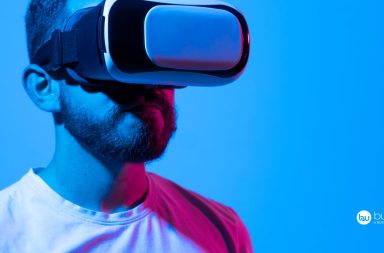Increasing Adoption of Telehealth / Data Analytics Increasingly Driving Wellness / Increasing Smartphone Penetration & mhealth – ResearchAndMarkets.com
DUBLIN–(BUSINESS WIRE)–The “Digital Health and Wellness Market – Global Outlook & Forecast 2023-2028” report has been added to ResearchAndMarkets.com’s offering.
The digital health and wellness market by revenue is expected to grow to $1,103.22 billion by 2028 from $335 billion in 2022, growing at a CAGR of 21.97%.
Digital health and wellness refer to being physically, socially, and emotionally healthy in a technology-focused world. The increasing adoption of digital technology across the world is one factor supporting the market’s growth. Digital wellness is of the utmost significance for creating balance and healthy decisions with devices and comprises technology people use for their well-being.
Factors such as growth in the adoption of smartphones, developments in coverage networks, and the increasing prevalence of health conditions impacting physical and mental wellness are driving the North American digital health & wellness market.
Further, increasing R&D funding activities for introducing safer products with differentiated functionalities will contribute to the growth of the U.S. digital health and wellness market in the coming years. The US’s leading drivers for health and well-being programs are managing physical and mental diseases or disorders such as schizophrenia, alcohol use disorder, bipolar disorder, bipolar disorder, depression, anxiety, and others.
Key Winning Imperatives in the Global Digital Health And Wellness Market
The growing usage of highly advanced technological platforms in hospitals is accelerating the adoption of healthcare robotics by making healthcare robots more sophisticated, efficient, precise, and affordable.
Digital health and wellness have made a seismic shift by bringing a new era of customized education and solutions that tend to each individualized well-being through AI. The outstanding use of wearable monitoring devices is giving rise to new dimensions in medicine, healthcare, and fitness applications, putting them into a more significant category of wireless networks known as Wireless Body Area Networks (WBANs).
Increasing Adoption of Telehealth
Telehealth has always been a primary pillar of technology-enabled care delivery which helps hospitals, health systems, and group practices deliver quality care at a distance and often also gain efficiencies, improve patient satisfaction of providers and save costs.
In addition, the COVID-19 pandemic severely challenged the health system’s capacity, thereby increasing telehealth opportunities. Virtual care and remote monitoring have never been utilized as they are today due to the COVID-19 pandemic. As federal policies remove many of the regulatory and reimbursement barriers that have hindered the more widespread adoption of telehealth, healthcare providers nationwide are using new technologies to deliver care amid social-distancing efforts to prevent coronavirus spread.
Companies such as InTouch Health, iRobot, and Vecna Technologies have developed robots that serve as the physician’s stand-in in remote clinics, community health centers, cruise ships, schools, sporting events, and even smaller hospitals. For instance, iRobot, a leader in delivering robotic solutions, made the first autonomous remote navigation robot Remote Presence Virtual Independent Telemedicine Assistant (RP-VITA).
Data Analytics Increasingly Driving Wellness
Data-driven decision-making is becoming the need of the hour, and physical and mental wellness is being reimagined. As the industry has evolved beyond measuring healthcare costs to becoming more focused on healthy lifestyles, data analytics and technology are playing a bigger role. Several investments in technologies and expanding their capabilities to measure their initiatives using big data.
Big data can provide health professionals insights into patterns that are usually difficult to detect. By enabling preventative care, early diagnosis, and personalized and consumer-centric approaches, it intends to facilitate better clinical outcomes.
Data from several sources, such as customer data from pharmacies, patient history, hospitals, cellphones, and internet searches, provide a massive pool of data, which can be used for clinical purposes to provide better opportunities for the digital health and wellness market growth.
Increasing Smartphone Penetration & mhealth Application
Psycho-graphical and demographical indicators of the population have changed drastically over the past few years. Factors such as the increased adoption of smartphones and tablets in developing countries have led to the increasing engagement of the population in health and wellness programs. Android and iOS are witnessing increasing adoption across various countries, especially in Africa.
Moreover, a large population base in various APAC countries, such as China and India, provides significant growth opportunities to the digital health and wellness market. Continuous innovation & development is leading to the launch of much more affordable smartphone options. Various smartphone vendors in the Chinese market are developing lower-cost products.
Also, the overall price of smartphones is much lower than PC and consoles, which results in higher adoption of smartphones for health and wellness programs, thereby driving the digital health & wellness market. Moreover, the rising disposable income enables the population to purchase smartphones over traditional mobile devices, leading to an increasing number of health and wellness program operators, thereby driving the market.
Data Security & Privacy Risks
Security and privacy risks are one of the major challenges for the digital health and wellness market because the nature of data and the way providers use it is vulnerable to cybersecurity attacks and data theft.
Telehealth platforms, including wearable and connected medical devices, smartphones, tablets, and remote patient monitoring systems like other computer systems, are exposed to potential hacks and security breaches, which can adversely impact the safety and effectiveness of the overall outcome of telehealth services.
COMPETITIVE LANDSCAPE
The global digital health and wellness market is highly fragmented, and the degree of fragmentation is expected to accelerate during the forecast period.
There is a significant number of global and domestic vendors across the geographies. Headspace, FranklinCovey, Vivify Health, Teladoc Health, Apple, and Samsung are the key vendors in the global digital health and wellness market. The industry has witnessed the entry of many external players, such as in-house services by large businesses and other entities in the health and fitness space that offer membership discounts to drive their share in the industry.
Mergers and acquisitions are common within the industry as players look to expand and become more comprehensive in their offerings.
Key Attributes:
| Report Attribute | Details |
| No. of Pages | 285 |
| Forecast Period | 2022 – 2028 |
| Estimated Market Value (USD) in 2022 | $335 Billion |
| Forecasted Market Value (USD) by 2028 | $1103.22 Billion |
| Compound Annual Growth Rate | 21.9% |
| Regions Covered | Global |
Premium Insights
Technological Developments
- Wearable Technology: Monitoring Devices
- Increasing Demand for Wireless Patient Monitoring at Home
- Rise of Virtual Clinical Trials
Market Opportunities & Trends
- Increasing Adoption of Telehealth
- Growing Reign of Artificial Intelligence (Ai)
- Data Analytics Increasingly Driving Wellness
Market Growth Enablers
- Increasing Smartphone Penetration & Mhealth Application
- Incorporation of Technology for Rising Self-Care
- Rising Development in Wearable Devices
Market Restraints
- Data Security & Privacy Risks
- Lack of Standard Interoperability
- Perceived High Cost of Digital Mental Wellness Programs
Key Vendors
- Headspace
- FranklinCovey
- Vivify Health
- Teladoc Health
- Apple
- Samsung
Other Prominent Vendors
- Altopax
- Amelia Virtual Care
- BigHealth
- Calm
- CogniFit
- CuraLinc Healthcare
- Epitel
- Fitbit
- Ginger
- Global Kinetics
- HealthUnlocked
- Healthy Hero
- Koa Health
- Misu
- MyndYou
- OxfordVR
- Psycurio
- Rani Therapeutics
- Talkspace
- Twill
For more information about this report visit https://www.researchandmarkets.com/r/upau7o
About ResearchAndMarkets.com
ResearchAndMarkets.com is the world’s leading source for international market research reports and market data. We provide you with the latest data on international and regional markets, key industries, the top companies, new products and the latest trends.
Contacts
ResearchAndMarkets.com
Laura Wood, Senior Press Manager
press@researchandmarkets.com
For E.S.T Office Hours Call 1-917-300-0470
For U.S./ CAN Toll Free Call 1-800-526-8630
For GMT Office Hours Call +353-1-416-8900


